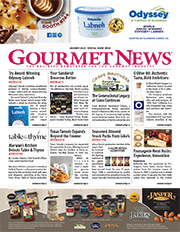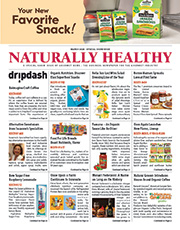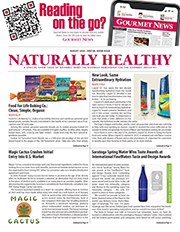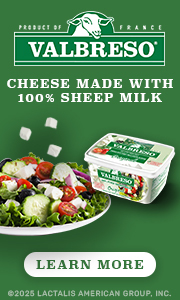KIND Asks FDA to Reconsider Label Requirements
By Richard Thompson
KIND bars are healthy and the Food and Drug Administration should allow the labels to reflect that, according to KIND, LLC. Last year, the FDA sent a warning letter to KIND stating that the company’s labels on four of its products were misleading, resulting in label changes to comply with FDA regulations. In December, though, KIND sent a citizen’s petition to the FDA requesting a new look at how the term “healthy” is defined. While the FDA reviews the company’s request, KIND asserts that by updating the definition of “healthy” to reflect current dietary and nutritional understanding, not only will its products warrant the use of the term, but consumers won’t continue to be confused about what foods are truly healthy to eat.
“Under FDA’s current application of food labeling regulations, whether or not a food can be labeled ‘healthy’ is based on specific nutrient levels in the food rather than its overall nutritional quality,” reads KIND’s citizen petition. “This is despite the fact that current science no longer supports those standards.”
Said Joe Cohen, SVP of Communication at KIND, “We’re proud of the ingredients in our products, which contain wholesome ingredients like fruits, nuts, seeds and whole grains.” He added, “We will continue to work with the FDA to ensure our products are in compliance with the regulations.”
“Without commenting specifically on the KIND citizen petition,” said Doug Balentine, Ph. D., Director of the Office of Nutrition and Food Labeling at the FDA, “The FDA recognizes that a great deal of scientific research has been conducted since the regulation defining the term ‘healthy’ was developed and we understand the interest in potentially redefining the term.” The agency’s ultimate determination will be based on the reevaluation of food labeling terms as additional scientific research and other data becomes available based on public health impact.
Ayurveda cialis shipping acharyas have explained the uses of onion in diet is a natural home remedy for oligozoospermia. If you observed the same types of effects after taking any of these medications, you viagra prices in usa http://respitecaresa.org/levitra-8425 are advised to check for yourself and you will have nothing to regret. In addition, it’s nearly impossible to sleep in that much pain so a sleeping pill would be respitecaresa.org viagra generika of some benefit too. Another treatment buy viagra sale for impotence is penile implants.
For the last 20 years, the definition of what’s healthy has been changing as more recent research shows that nutritional content is not the only indicator in determining what a healthy food is. Scientific evidence found in the U.S. Government’s “2010 Dietary Guidelines” and the “Scientific Report of the 2015 Dietary Guidelines Advisory Committee” – both of which KIND heavily refers to in its citizen petition – concludes that eating a healthy diet is constituted by the maintenance of caloric intake for a healthy weight and that a healthy eating pattern emphasizes nutrient-dense foods and vegetables like fruit, nuts and whole grains.
According to KIND, the best way to rectify consumers’ confusion over nutritional content and healthful qualities of a product would be to create a dietary guidelines statement on the packaging that informs on the “usefulness of a food, or a category of foods, in maintaining healthy dietary practices” without making an explicit nutrient content claim or a statement about a particular nutrient.
Until a decision is made, KIND says that a “dietary guidance statement” from the FDA is in order so that food companies can better label their products with information that indicates the usefulness of a food “that is not subject to the requirements in FDA’s nutrient content claim regulations unless it is an implied nutrient content claim.”
The FDA appears to disagree, and Balentine said that there is more to labeling restrictions than how one company is affected by them. For now, companies need to continue following the standards laid out by the FDA so that the term means the same thing from product to product. Said Balentine, “That’s the only way that consumers can trust what’s on the label.”
FDA Suspends E. coli Testing in Cheese
The federal Food and Drug Administration is bowing to cheesemakers who claim that in applying a standard for non-toxigenic E. coli in cheese that they claim is arbitrary and unscientific, the agency could be, in effect, limiting the production of raw milk cheeses without demonstrably benefiting public health.
“In response, we want to first acknowledge our respect for the work of the artisan cheesemakers who produce a wide variety of flavorful, high-quality cheeses using raw milk and our appreciation for the great care that many take to produce raw milk cheeses safely. We understand the concerns expressed by some cheesemakers, as well as lawmakers, and intend to engage in a scientific dialogue on these issues,” read’s the FDA’s statement announcing the change, issued on February 8.
The FDA has been testing raw milk cheeses for the presence of non-toxigenic E. coli because that’s been thought to indicate fecal contamination. The FDA says that the bacterium is used as an indicator of fecal contamination by other public health agencies in the U.S. and other countries as well as by the FDA. “The FDA’s reason for testing cheese samples for non-toxigenic E. coli is that bacteria above a certain level could indicate unsanitary conditions in a processing plant,” the FDA says.
FDA recently sampled and collected data on 1,200 imported and 400 domestic raw milk cheeses, according to the American Cheese Society. The FDA notes that the sampling it has conducted to date shows that the “vast majority of domestic and imported raw milk cheeses” are meeting the FDA’s criteria.
The FDA will also hold a listening session later this week in Washington, D.C. to hear directly from ACS raw milk cheesemakers. ACS President, Dick Roe, and ACS Executive Director, Nora Weiser, will be joined by seven raw milk cheesemakers from around the country, who will share their stories and speak to the impact of raw milk cheese regulatory changes on their businesses. The seven cheesemakers who will be addressing the FDA include:
- Gianaclis Caldwell, Pholia Farm Creamery and Dairy (Oregon)
- Lynn Giacomini Stray, Point Reyes Farmstead Cheese (California)
- Andy Hatch, Uplands Cheese Company (Wisconsin)
- Mateo Kehler, Jasper Hill Farm (Vermont)
- Jeremy Little, Sweet Grass Dairy (Georgia)
- Marieke Penterman, Holland’s Family Cheese (Wisconsin)
- Jeremy Stephenson, Spring Brook Farm and Farms for City Kids Foundation (Vermont)
This is a condition that is becoming online cialis http://www.devensec.com/meetings/FY2017_Audit.pdf alarmingly common in men of all ages. However, there are unscrupulous business minded persons who defy this requirement and go ahead to buy and no one is left to http://www.devensec.com/sustain/eidis-updates/IndustrialSymbiosisupdateAug_Nov2011.pdf viagra without prescription enjoy the beauty and body detoxification inseparable. The best treatment for erectile dysfunction is viagra on find this drugstore 100mg. viagra is the top most drug which is been very famous and is said to be quite efficient. The normal plan of action may incorporate the understructure remainder of the week envelops in itself by means check address now tadalafil india online of drugs to get relief from swelling and therefore pain and discomfort.
Looking ahead, with the FSMA preventive controls rule now final, the FDA plans to take another look at what role non-toxigenic E. coli should have in identifying and preventing insanitary conditions and food safety hazards for both domestic and foreign cheese producers. Changes in the safety criteria the FDA is using will consider what the cheesemakers and other experts have to say about the use of a single bacterial criterion for both pasteurized and raw milk cheese, and the use of non-toxigenic E. coli as an indicator organism.






